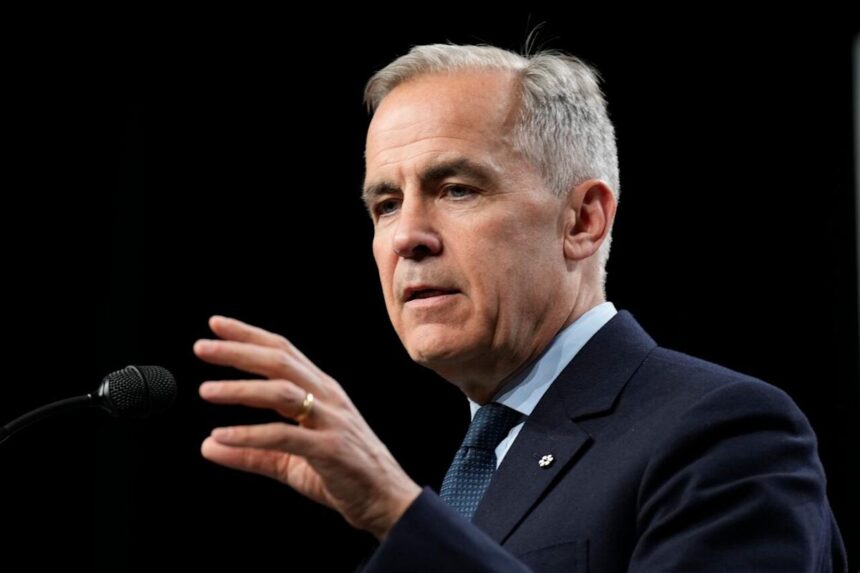The chilly spring wind whips across the Hamilton harbor as I stand at the edge of Canada’s steel heartland. Smokestacks from ArcelorMittal Dofasco punctuate the skyline, symbols of an industry that has defined this region for generations. But behind the industrial facade, anxiety has been building among the 23,000 Canadian steelworkers facing an increasingly hostile global market.
“We’ve been competing with one hand tied behind our backs for years,” says Marco Simone, a third-generation steelworker I met outside the plant gates. “Our government finally seems to understand what we’re up against.”
That understanding manifested this week as Trade Minister Mary Ng announced sweeping new import restrictions on seven categories of steel products. The move, championed by Finance Minister Chrystia Freeland and Industry Minister François-Philippe Champagne, represents the most aggressive trade action Canada has taken to protect its $15 billion steel industry in recent memory.
The restrictions come at a critical moment. Global steel capacity has reached unprecedented levels, with the Organization for Economic Cooperation and Development (OECD) reporting a staggering 690 million metric tons of excess production capacity worldwide. China alone accounts for over half of global steel output despite slowing domestic demand, creating massive export pressure that has destabilized markets across North America.
Canadian officials point to a 135% surge in foreign steel imports over the past year, with particularly sharp increases in hot-rolled and cold-rolled sheet products. The new safeguard measures will impose tariff-rate quotas on imports exceeding historical trading patterns, effectively capping foreign steel at levels the domestic industry can withstand while maintaining key supply relationships.
“This isn’t about shutting down trade,” explains Catherine Cobden, president of the Canadian Steel Producers Association. “It’s about creating breathing room for an industry that supports over 123,000 direct and indirect jobs while we navigate this unprecedented global disruption.”
What makes this policy shift particularly notable is its timing. The Trudeau government has historically favored liberal trade policies, but this intervention signals a pragmatic recalibration as the administration faces increased pressure from both labor unions and national security experts concerned about industrial capacity.
“Steel isn’t just another commodity,” notes Perrin Beatty, president of the Canadian Chamber of Commerce. “It’s fundamental to our manufacturing base, our defense capabilities, and our infrastructure resilience.” Beatty’s organization, which typically advocates for reduced trade barriers, has cautiously endorsed the new measures as a necessary response to “predatory export practices from state-subsidized producers.”
The restrictions align Canada more closely with American trade policy under the Biden administration, which has maintained the Section 232 tariffs on steel imports introduced during the Trump presidency. While Canadian producers have enjoyed exemption from these American restrictions since 2019, they’ve increasingly complained about third-country “transshipment” – foreign steel entering Canada duty-free only to be re-exported to the U.S. market.
American trade officials have welcomed Canada’s move. U.S. Trade Representative Katherine Tai issued a statement calling the Canadian action “a responsible step toward addressing shared concerns about global excess capacity and ensuring the integrity of our integrated North American supply chains.”
Not everyone shares this enthusiasm. Downstream manufacturers who rely on imported steel warn that restricting supply could increase their input costs at a time when many are already struggling with inflation and labor shortages. The Canadian Manufacturers & Exporters association estimates that 97,000 Canadian firms use steel inputs, many of whom operate on thin margins in highly competitive global markets.
“We understand the steel industry’s challenges, but shifting costs upstream doesn’t solve the fundamental problem,” says Dennis Darby, president of Canadian Manufacturers & Exporters. “We need comprehensive solutions that strengthen the entire industrial ecosystem, not just one segment at the expense of others.”
International reaction has been similarly mixed. The European Steel Association (EUROFER) expressed concern that Canada’s restrictions could divert more Asian steel toward European markets. Meanwhile, diplomats from South Korea and Turkey – both significant steel exporters to Canada – have signaled they may challenge the measures through the World Trade Organization.
The restrictions represent a notable policy evolution for Finance Minister Chrystia Freeland, who made her name as an advocate for rules-based international trade before becoming a key architect of Canada’s more assertive industrial strategy. Standing at a steel plant in Sault Ste. Marie last month, Freeland framed the issue in stark terms: “We cannot be naive about the challenge we face. Countries that cannot make steel cannot defend themselves.”
That security dimension has become increasingly central to trade conversations as geopolitical tensions rise. Industry analysts point to Russia’s full-scale invasion of Ukraine as a wake-up call about supply chain vulnerabilities and the strategic importance of maintaining domestic production capacity in critical sectors.
Visiting a Hamilton training facility where young apprentices learn the steelmaking trade, I’m struck by the generational stakes. Jessica Alvarez, 24, adjusts her safety glasses as she explains why she chose this career path: “My grandfather and father both worked in steel. For a while, everyone said this industry had no future in Canada. Now it feels like we might have a fighting chance.”
That fighting chance comes with significant challenges. Canadian producers must use this breathing room to accelerate decarbonization efforts and improve productivity if they hope to remain competitive in the long term. ArcelorMittal Dofasco and Algoma Steel have both announced multi-billion-dollar investments in electric arc furnace technology that would dramatically reduce carbon emissions, but these transitions require years to implement.
As I leave Hamilton, watching the steel mills recede in my rearview mirror, I’m reminded that industrial policy is always a complex balance – between free trade principles and economic security, between consumer interests and producer viability, between short-term protection and long-term competitiveness. Canada’s steel restrictions represent not just a trade policy adjustment but a recognition that in today’s fractured global economy, even the most committed free-traders are reassessing what it means to pursue their national interest.






